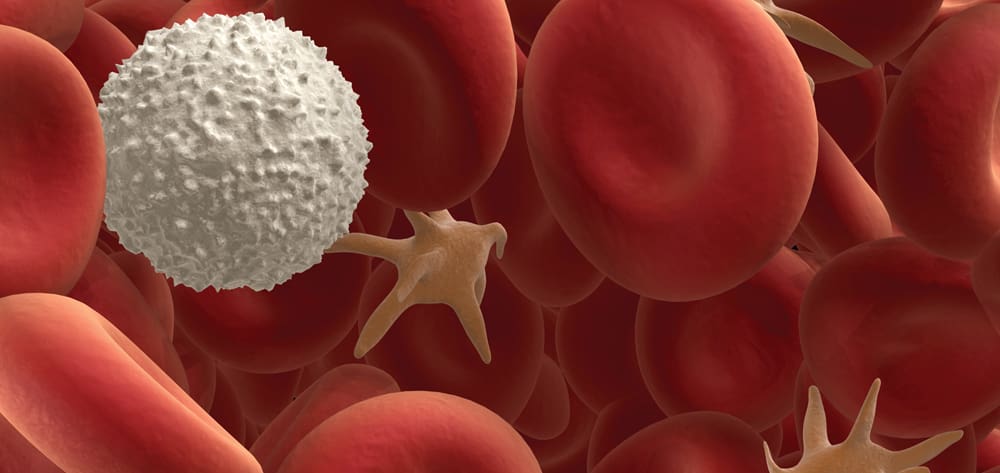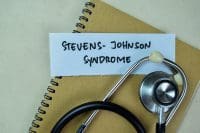A woman, age 65, is admitted to the hospital with a hip infection after hip replacement surgery. The infection, caused by Staphylococcus aureus, has been difficult to treat, so she’s admitted for more aggressive antibiotic therapy. On admission, a nurse records this information:
- Heart rate: 113 beats/minute
- Respiratory rate: 28 breaths/minute
- Temperature: 100.9˚ F (38.3˚ C)
- White blood cell count (WBC): 21,200/µl
Within 24 hours of admission to a medical unit, her urine output falls. Believing she may be dehydrated, the physician orders 1,500 ml of normal saline solution. But she doesn’t respond well to the fluid administration.
The next day, her pulse oximeter reading falls from 96% to 88%. In response, she’s given nasal oxygen at 3 L/minute, which increases her oximeter reading to 92%. Then, less than 36 hours after the start of oxygen therapy, her blood pressure drops, and she is transferred to the intensive care unit (ICU).
In the ICU, she’s intubated and given the only treatments available for sepsis: aggressive fluid replacement to return oxygen saturation to normal, tight glycemic control to keep her blood glucose level below 150 mg/dl, and corticosteroid replacement. She’s also given the only drug that directly treats sepsis, activated protein C (Xigris).
Infection or sepsis?
Despite these efforts, she dies after 10 days in the ICU. The official cause of death is a staph infection. But she did not die of an infection. She died of sepsis.
Actually, very few people die of infections. As William Osler said over 100 years ago, “Except on few occasions, the patient appears to die from the body’s response to infection rather than from it.” Unfortunately, the confusion between infection and sepsis is responsible for delays in identifying sepsis. And delays in treating sepsis can result in tragic outcomes, as occurred in this case.
Sepsis is lethal, and its development is insidious. Without vigilant attention, clinicians may recognize sepsis too late, and late recognition, in turn, limits the effectiveness of the few treatments available to treat sepsis.
Recognizing sepsis in time
Sepsis, the leading cause of death in noncardiac ICUs, is an underrecognized condition. In the above case, the patient had sepsis on admission. But her condition was diagnosed only as an infection. Clearly, some simple critical thinking steps were missed:
- Why would someone with a hip infection have a decrease in urine output?
- Why would someone with a hip infection have a drop in her pulse oximeter value?
- Why are the kidneys and lungs being affected by an infection that has nothing to do with those organs?
A patient with a local infection, such as a hip infection, does not usually have systemic signs and symptoms, such as tachycardia, tachypnea, fever, and an increased WBC count. When a patient with an infection does have signs and symptoms of systemic inflammatory response syndrome (SIRS), the likely cause is sepsis.
The failure to recognize the connections between infection, secondary organ failure, and sepsis can lead to delayed recognition and treatment. And this delay can be fatal.
Unfortunately, sepsis doesn’t produce obvious symptoms. Although it claims almost as many lives as myocardial infarction (MI), the symptoms of sepsis are much more subtle. The signs and symptoms may also progress over time, further obscuring the condition from all but the most vigilant clinicians.
Patients with sepsis often die in the ICU, but sepsis typically begins in the home or on the medical-surgical unit. Thus, all clinicians must know how to recognize the signs and symptoms of sepsis. Some hospitals now have rapid-response teams that help bedside nurses rapidly assess and treat patients with life-threatening conditions such as sepsis. These teams are usually made up of an ICU nurse and other clinicians, such as a physician and a respiratory therapist. Any nurse who wants help evaluating a patient can activate the team.
Defining—and surviving—sepsis
In 2002, an international organization called the Surviving Sepsis Campaign (SSC) formed with the goal of reducing the number of deaths from sepsis by at least 25% by 2009. The SSC has teamed with leading health advocate groups, such as the Institute for Healthcare Improvement. Working together, these groups developed guidelines for clinicians and hospitals to help recognize and treat patients with sepsis.
The definition of sepsis is evolving as we develop better methods of understanding the condition. Currently, sepsis is defined as infection plus the signs and symptoms of SIRS. If an organ fails, the condition is called severe sepsis.
This definition rests squarely on these physical signs, but physical signs can be inaccurate and nonspecific. We need better indicators of sepsis. Today, a biomarker for sepsis—such as troponin I for MI—isn’t available. Tests such as procalcitonin, can indicate a general inflammation, but they aren’t specific for sepsis. Specific sepsis biomarkers, such as protein C levels, offer promise, but require more study. For now, identifying sepsis means identifying the signs and symptoms of SIRS.Pathophysiology
The complex pathophysiology of sepsis produces a dizzying array of physiologic responses. But the basic response is a perversion of the normal immune response to an infection. When an invader (antigen) of any type (bacteria, virus, or parasite) enters the bloodstream, three things happen:
- The immune system quickly recognizes the invader, and circulating monocytes release a series of mediators, called cytokines.
- The cytokines isolate the invader by clotting.
- The cytokines kill the invader by attracting neutrophils and other components of the immune system.
Very few invaders can withstand the immune system response. When the invader is destroyed, the mediators signal each other, so no more are released, and the body returns to normal.
In sepsis, something else happens. For reasons we don’t understand, the immune system overreacts to the invader. This immune response may be related to characteristics of the invader—for instance, a large number of invaders, the presence of super-invaders (super-antigens), the invaders’ resistance to neutrophils, or the invaders’ resistance to antibiotics.
Whatever the cause, the immune system initiates clotting in many places, and the body starts attacking normal tissue. Excessive clotting and cellular dysfunction interfere with blood flow and diminish cellular oxygenation. Cells start to shut down (called cell stunning) and die (called apoptosis). Then, organs start to fail. Unless the process is stopped in time, the patient dies.
Treating sepsis
The SSC recommends 45 therapies for sepsis, but most focus on the best and most important treatment—prevention. Specifically, these therapies address avoiding infections and limiting injury associated with sepsis. A patient who has an infection must receive aggressive, appropriate antibody therapy.
The SSC recommends only a few therapies for sepsis. If a patient shows signs and symptoms of sepsis, start therapy quickly.
Early goal-directed therapy
As soon as a patient shows signs and symptoms of sepsis, you can determine the severity by obtaining a blood lactate level. The normal level is 1 to 2 mmol. If the patient’s lactate level is elevated and the patient has metabolic acidosis (a low serum bicarbonate level), tissue oxygenation is likely at risk.
To return tissue oxygenation to normal, give fluids. The best gauge of tissue oxygenation is central venous oxygen saturation (ScvO2), which measures the amount of hemoglobin that returns to the heart still containing oxygen. This amount is the only oxygen reserve in the body.
The normal ScvO2 is 70%. If the patient’s ScvO2 is lower, tissue oxygenation is threatened. Keep in mind that ScvO2 levels reflect oxygenation in the entire body, not individual organs. Thus, a patient may have cerebral hypoxia, but it will not substantially affect the ScvO2 levels.
Giving fluids as well as a vasopressor, blood, and an inotropic agent until ScvO2 returns to normal is a major component of sepsis treatment. Such early goal-directed therapy improves the sepsis survival rate by 16%.
Tight glycemic control
In sepsis, hyperglycemia and insulin resistance commonly develop. Hyperglycemia has a procoagulant effect and thus can interfere with the normal immune response, leading to apoptosis and other complications, such as impaired neutrophil function, increased risk of infection, and impaired wound healing.
Keeping blood glucose levels below 150 mg/dl benefits a patient with sepsis. Plus, giving insulin to treat hyperglycemia may help because of insulin’s anti-inflammatory, anticoagulant, and anti-apoptotic effects.
Corticosteroid replacement
In advanced sepsis—for example, in patients with hypotension—corticosteroid replacement can help. High-dose corticosteroid therapy isn’t effective. But replacement-dose therapy may be effective in patients with diminished adrenal function, particularly those in septic shock. If the patient is hypotensive or has a low serum cortisol level, give 200 to 300 mg of hydrocortisone daily for 7 days as replacement corticosteroid therapy.
This replacement therapy may help compensate for the disruption of a key factor in the stress response—the hypothalamic–pituitary–adrenal axis. About half the patients with septic shock have this disruption, which adversely affects the ability of the adrenal cortex to release the corticosteroid, cortisol. And this disruption may be at least partly responsible for the high mortality rate among those with septic shock.
Activated protein C
Activated protein C (Xigris) is the only drug that works in patients with sepsis. This natural protein of the body is one of the three natural anticoagulation pathways. It only works in very sick patients with sepsis, such as those with a high risk of death—a phrase that may be best defined by the bedside clinician.
Today, there are no universally accepted criteria for the term high risk of death, though some objective criteria exist:
- multiple organ failure
- the use of vasopressors
- an APACHE II score of more than 25. (This test estimates the severity of illness.)
The mortality rate for patients with a high risk of death is more than 40%. Activated protein C improves survival by 13%. The only side effect of the drug is bleeding, the risk of which is less than 5%. Bleeding can be controlled by stopping the infusion.
Reaching the life-saving goal
Nurses play a critical role in improving outcomes for patients with sepsis. To save the lives of those with sepsis, all nurses, no matter where they work, must develop their skills for recognizing sepsis early and initiating appropriate therapy. With nurses dedicated to understanding and stopping this deadly disorder, the SSC’s goal of reducing mortality by 25% will be realized.
Selected references
Bone RC, Sibbald WJ, Sprung CL. The ACCP-SCCM consensus conference on sepsis and organ failure. Chest. 1992;101(6):1481-1483.
Dellinger RP. Recombinant activated protein C: the key is clinical assessment of risk of death, not subset analysis. Crit Care. 2006;10(1):114.
Dellinger RP, Carlet JM, Masur H, et al. Surviving Sepsis Campaign guidelines for management of severe sepsis and septic shock. Crit Care Med. 2004;32(3):858-873.
Hotchkiss RS, Karl IE. The pathophysiology and treatment of sepsis. N Engl J Med. 2003;348:138-150.
Micek ST, Roubinian N, Heuring T, Bode M, Williams J, Harrison C, et al. Before-after study of a standardized hospital order set for the management of septic shock. Crit Care Med. 2006;34(11):2707-2713.
Rivers E, Nguyen B, Havstad S, et al. Early goal-directed therapy in the treatment of severe sepsis and septic shock. N Engl J Med. 2001;345(19):1368-1377.
Russell JA. Management of sepsis. N Engl J Med. 2006;355:1699-1713.
Silverman ME, Murray TJ, Bryan CS, eds. The Quotable Osler. Philadelphia: American College of Physicians; 2003.
Tom Ahrens, DNS, RN, FAAN, is a Research Scientist at Barnes-Jewish Hospital in St. Louis, Missouri.



















1 Comment.
My husband died after knee replacement surgery, he had sepsis. He officially died of a heart attack but never had heart problems. My question is could the sepsis have caused the heart attack? He was only 56 years old and in good health before the surgery.